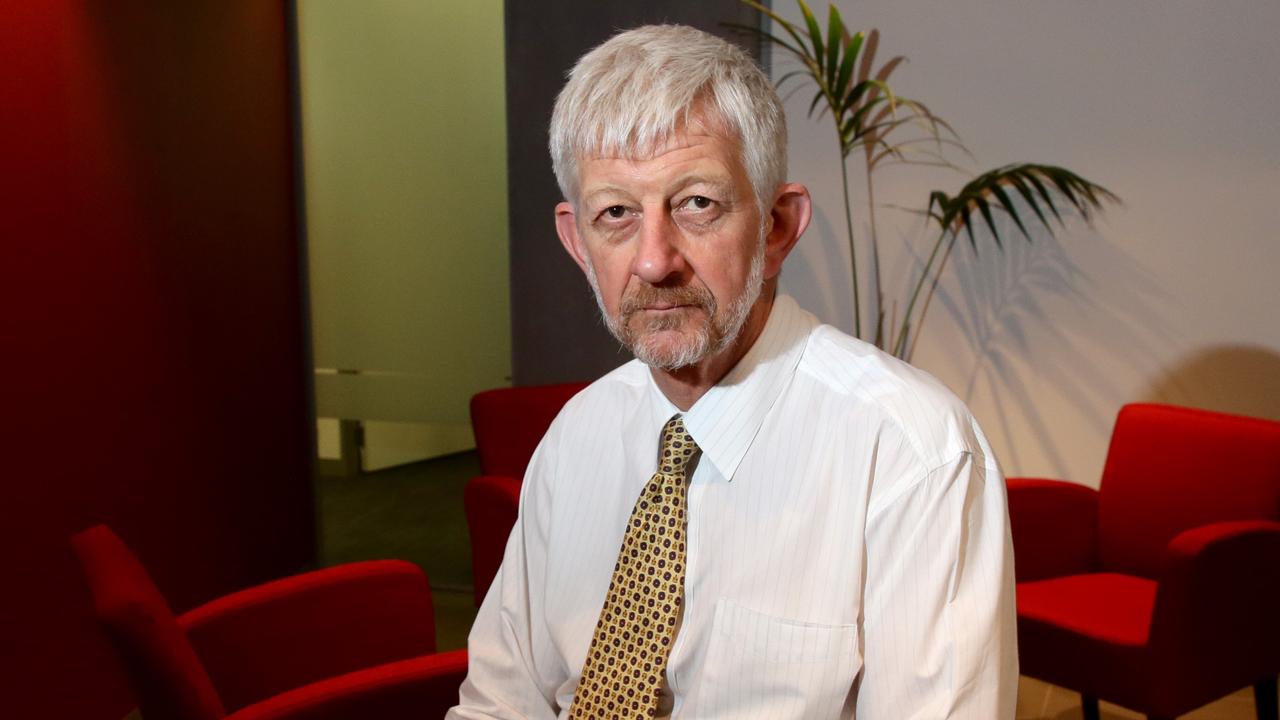Kim Anthony Raymont Akerman: Guardian of Indigenous knowledge and history
Respected anthropologist Kim Anthony Raymont Akerman, who studied Indigenous culture in the Kimberley, has died, aged 76.

My elder brother Kim was widely known and respected here and abroad by both Indigenous communities and a large group of anthropologists and archaeologists. An adjunct professor of the University of Western Australia, where he studied anthropology and science, he was also a Fulbright scholar.
He had strong relationships with groups across the Kimberley including the Yawuru, Ngarinyin, Worrorra, Kukatja, Wunambal, Nikina, Ngaanyatjarra and Bunuba. He was recognised as an expert authority on the manufacture of stone tools and material culture.
He replicated many examples, from obsidian micro-tools to edged scalpel blades for delicate eye surgery to the lethal points he flaked for hunting.
Museums and international researchers benefited from his input on the fashioning of early tools.
When not chipping rocks and crafting blades, he carved countless exquisite objects, animals and scenes and motifs often inlaid with shell, horn or amber.
UWA archaeology professor Peter Veth has said: “There have only been a handful of observers, collaborators and champions of Aboriginal society, religion, symbolic practice and material culture who have reached the same degree of immersion as Kim Akerman.
“Always generous and expansive as an intellectual, his publications cover the technology and aesthetics of Aboriginal artefacts, the form and spiritual basis of both contemporary and rock art, fishing and hunting technologies, and a suite of art and artefact catalogues – ranging from (celebrated artist) Rover Thomas to the Vatican collection.”
Kim’s interest in Indigenous people began almost from birth. Our father, Dr John Akerman, and mother, Eve, donated much of their collection of artefacts obtained during patrols up the Sepik River, Wogeo Island, around Goroka and Rabaul, to the Queensland Museum.
Kim’s acceptance by Indigenous law men may have begun in Broome when elder Paddy Roe expressed disappointment that two young men entrusted to his care were uninterested in their Aboriginal heritage and not initiated.
Paddy asked Kim whether he would accept the responsibilities of a law man and knowledge of the bugarrigarra – the spiritual force shaping culture and practice – and a group of elders took him into the desert for a prolonged period of cultural education. I was privileged to meet three of these now deceased elders who were formational in his induction into Indigenous culture: Scotty Black (who was to become a mentor to mining magnate Andrew Forrest), Albert Barunga (the esteemed Worrorra spokesman) and Sammy Woolagoodja.
Sammy’s son Donny Woolagoodja was the talented artist who created the Wandjina that rose over the opening ceremony of the Sydney Olympics.
Other teachers included David Mowaljarlai (Derby), and John Mosquito (Balgo) who gave Kim his skin name Tjapanarti, though he was known as Kakerman or Hakerman in the camps.
Kim kept an enormous collection and extensive library of field journals with no political agenda which must remain accessible to academics and Indigenous people. His original anthropological papers, books and translations of journals kept by Swedish and German ethnographers from the late 19th and early 20th centuries number in the hundreds.
A former curator at three museums, he sat on several scientific committees and was an adviser to Aboriginal communities, notably in the Kimberley where he had been involved in the formation of the Kimberley Land Council in 1978 at Noonkanbah.
He was also a member of the Scientific Advisory Council of the Kimberley Foundation Australia (now Rock Art Australia) where his knowledge of Wandjina and the cultures of the Kimberley and Arnhem Land were deeply valued. He was involved in the repatriation of ancestral remains and material culture to remaining communities from European collections.
In recent years he instructed visiting Aboriginal people in the manufacture of traditional tools, video records were made.
Former WA premier Peter Dowding said Kim was “a true Australian hero, but at the same time unassuming, a gentle warm friend with a wonderful sense of humour.
“His many academic papers on Indigenous history, law and culture attest to his hard work, but it was his ability to build the relationships where he could be trusted with Indigenous knowledge by his informants and his deep respect and understanding which gave him the edge in his research.”
He had two children, Obelia and Josh, with his first wife, Ann Clare Tully. For the past 30 years he resided in Hobart with his wife, Val Hawkes, and was much loved by their extended families.
His scientific work in Australia was prolific and he has left a legacy of which the nation can be proud.
Kim Anthony Raymont Akerman. Born Rabaul, New Guinea, November 5, 1947; died Hobart, September 19, aged 76.




To join the conversation, please log in. Don't have an account? Register
Join the conversation, you are commenting as Logout